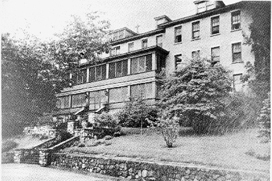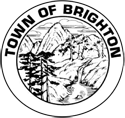Town Historical Notes
Why is Brighton called Brighton? When, in 1858, the town was formed, or ‘set off’ from the Town of Duane, it was given the name originally assigned to the southern part of Duane in 1792 by the surveyors of the Macomb purchase – that of a “town in England.” It has no more significance now than it did then. Who among us when asked where we live answers “Brighton?” The name we use in answer to that question is “Gabriels, McColloms, Paul Smiths or Rainbow Lake.” Our history is the history of those communities and the people who settled them and whose descendants are still here.
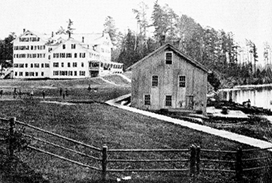
Paul Smith’s Hotel and boathouse.
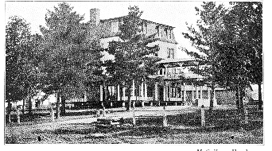
Circa 1885. McColloms Hotel.
Although there are earlier dates of recorded activity in the communities of Brighton — the Rices in the McColloms area in 1819 and 1820, and Samuel Johnson (1815) and Moses Follensby (1823) in Paul Smiths – the lasting settlements seem to have begun about the time the Town was formed. Amiel McCollom settled and began to farm in 1849; Oliver Keese and Thomas Tomlinson had dammed the St. Regis and started a lumber business in 1851; James M. Wardner was farming in Rainbow Lake in 1854; newly married Paul and Lydia Martin Smith opened their first hotel in 1859, and the Hobarts were farming in Gabriels by 1860.
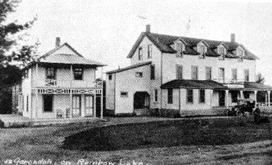
Garondah Cottage at Rainbow Lake in the early 1900s.
